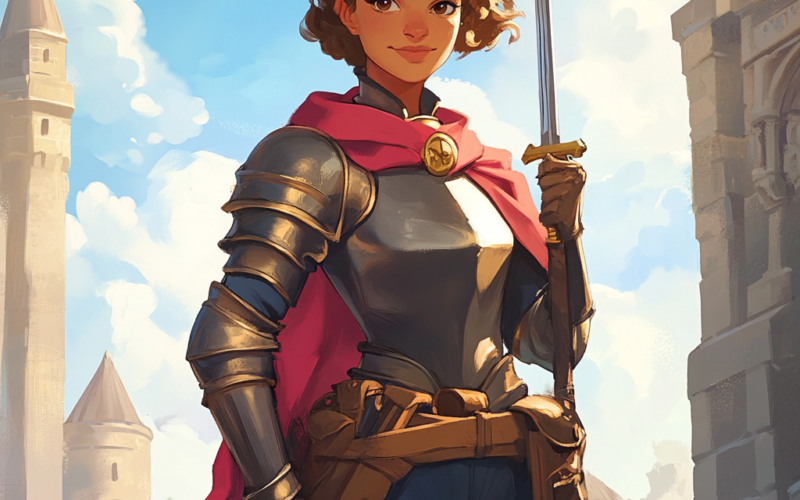The importance of illustration style for the gaming atmosphere
Stylistics of illustrations plays a vital role in creating the atmosphere of the game. It helps form your first impression of the game world and interact with its features on a deep level. For example, bright and colorful illustrations can make the player feel joyful and light, while dark, rich colors are often associated with mysticism or anxiety.. Stylistics help convey to the player the uniqueness of the world, reflecting its culture, time and mood.
Using the style of illustrations, you can emphasize not only visual elements, but also emotional moods. For example, games with fantasy or science-fiction elements often use stylized illustrations that create the feeling of being in a completely different world. The game’s atmosphere is directly related to the artist’s choice of style – from abstract art to cartoonishness – and how this affects the perception of characters, places and plot twists.
Types of illustrations: from realism to minimalism
The choice of illustration type depends on what kind of experience the developers want to convey to the player. Realistic illustrations, with detailed textures and lighting, are most often used in games with historical or military themes. Such images create a sense of verisimilitude, immersing the player in an atmosphere as close to reality as possible. They are suitable for games where every element of the environment and visual perception of the world is important.
On the other hand, minimalistic illustrations that use simple shapes and colors can be ideal for arcade or mobile games where the focus is on gameplay. This style of illustration helps focus the player’s attention on the mechanics of the game, removing distracting elements. It may be especially appealing to younger audiences who love clean lines and bold contrasts.
The influence of the target audience on the choice of style
When choosing an illustration style for a game, it is important to consider what audience it is intended for. For younger audiences, bright and cheerful styles are often chosen, with simple but expressive characters and worlds. While for more mature players, a more complex and serious style, with elements of realism or a dark theme, may be suitable. For example, a game for children might have stylized characters with large eyes and soft lines, which creates an atmosphere of kindness and innocence.
The target audience also influences preferences for visual complexity. Young players may prefer brighter, cartoonish elements, while older players may prefer more serious and detailed images. Understanding this difference helps create not only a visually appealing, but also an emotionally appropriate experience for the player.
Matching the style to the game genre
Each genre of games dictates a certain stylistic presentation. For example, adventure games often use detailed, almost photorealistic graphics to convey all the nuances of the world in which the action takes place. However, for platformers or role-playing games, it may be more appropriate to use stylized characters and vibrant, dynamic visuals. The style directly depends on what the developer wants to convey to the player during the game – sensuality, tension, or dynamism.
Games where the strategic aspect is important, such as turn-based strategy games, often use more subdued illustrations so as not to overwhelm the player with unnecessary visual effects. At the same time, action games or role-playing games with fantasy elements can afford more vibrant and expressive styles, which will increase engagement in the process.
The role of the color palette and details in style
The color palette in a game not only determines the overall appearance, but also affects the perception of the game world. Warm colors create an atmosphere of comfort and calm, while cool colors can evoke feelings of loneliness or anxiety. The correct use of color helps create the right mood and support the overall perception of the game. For example, games with horror or mystery elements often use a dark palette with contrasting bright accents.
Details in style play an equally important role. Small elements like textures, interface design, or even environment design can make a big difference in the atmosphere. If the game is about the daily experiences of the characters, then paying attention to the little things—the right texture of clothing, shoes, weapons—helps create a more immersive atmosphere. The more attentive the artists are to details, the stronger the player’s involvement in the gameplay.
How does style influence game perception and branding?
Stylistics in games play a vital role not only in the perception of gameplay, but also in creating a unique brand identity. Elements such as illustrations, graphics, animations and colors help create not only the atmosphere, but also the perceived image of the game. When a game’s style becomes recognizable, it creates a powerful brand that attracts players and makes the game more attractive in the market. The style allows the game to stand out among many other projects, making it unique and memorable.
- The influence of style on the overall atmosphere of the game
The style of illustrations directly affects how the player perceives the game world and its atmosphere. Style can evoke certain emotions in the player, for example, bright and saturated colors can create a feeling of joy and light-heartedness, while dark shades and textures can create a feeling of tension or anxiety. These emotions become an integral part of interaction with the game, which enhances immersion in its world. - Style as a means of highlighting a brand
The unique style helps the game stand out among the many competitors in the market. When developers adhere to a certain stylistic concept, it helps to create a strong brand that is easy to remember. Games with unique graphics, memorable characters or unusual colors become recognizable, which helps not only attract players, but also retain their attention in the long term. - The influence of style on the perception of the target audience
The choice of illustration style often depends on the target audience. For example, a cartoon style may attract a younger audience, while mature players may appreciate more detailed and serious illustrations. Understanding the needs of the audience and choosing the appropriate style helps developers not only attract, but also retain their target group. The style must be compatible with the expectations and preferences of the players to make the game more attractive to them. - Interaction of style with game mechanics
The style of the game should be organically combined with its mechanics. For example, fast-paced games such as shooters or action games use bright, high-contrast colors and dynamic shapes to convey a sense of speed and tension. While for more meditative or strategic games, on the contrary, it is preferable to use calmer, muted colors and more restrained stylization. This allows you to create harmony between visual perception and game mechanics. - Stylistics and its impact on long-term brand perception
When a game has a unique style, it helps the brand remain relevant over time. For example, even after the game’s release, its style may remain in demand and attract players. This style becomes an integral part of how the game is perceived, which helps it maintain its popularity for a long time. Many acclaimed games maintain their uniqueness by developing and maintaining a specific visual style, which helps build long-lasting brand equity.
The style of a game has a huge impact on its perception by both players and the market as a whole. The right style not only enhances the atmosphere of the game, but also plays an important role in creating a strong brand that remains relevant and memorable. The interaction of a game’s visuals with its mechanics and target audience creates a unique experience that plays a key role in the game’s success.
Questions and answers
Answer 1: Stylistics help form the first impression of the game, creating a unique atmosphere that affects the perception of the game world and the player’s emotions.
Answer 2: Realistic illustrations create a sense of verisimilitude, and minimalism helps focus on gameplay while reducing visual distraction.
Answer 3: For younger audiences, bright and cheerful styles are suitable, while for more mature players, more serious and detailed illustrations are suitable.
Answer 4: Each genre requires its own stylistic presentation: for example, adventure games often use photorealism, and platformers often use stylized elements.
Answer 5: The color palette creates atmosphere, and details such as textures and design elements deepen the experience of the game and enhance its atmosphere.

